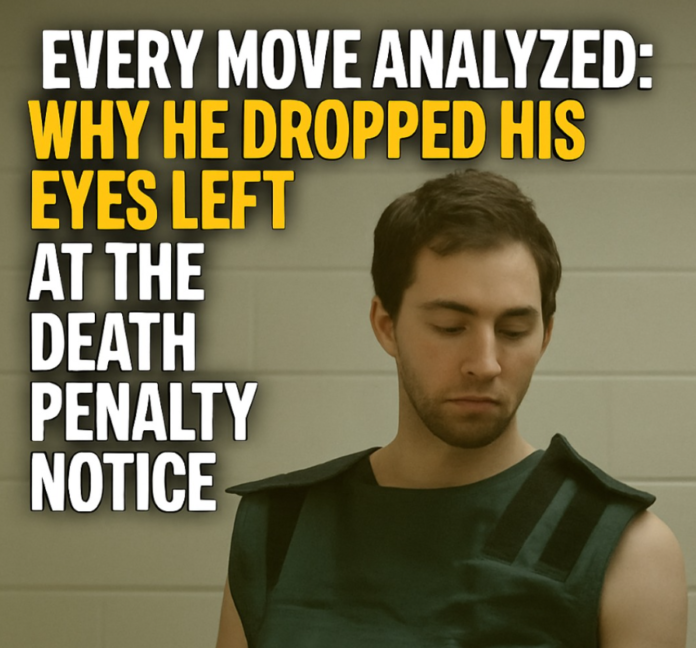The courtroom fell silent as prosecutors declared: “We did file a notice of intent to seek the death penalty.”
In that instant, all eyes turned toward the accused — Tyler “James” Robinson. Cameras captured what happened next: his gaze dropped, not straight down, not toward his attorney, but specifically down and to the left.
This small, almost imperceptible move has triggered waves of discussion. Why that direction? What does it reveal?
The Meaning Behind Looking Left
Body language experts often argue that when people avert their gaze to the left, it can indicate an attempt to recall or even invent details. It is associated with mental processing — sometimes with the construction of a story rather than the recall of truth.
Others interpret the gesture as avoidance, a subconscious admission of shame or fear when confronted with a reality too heavy to face directly. And in this moment, Robinson wasn’t just facing a trial. He was facing the possibility of execution.
History Repeats: Other Defendants Who Looked Left
This isn’t the first time the public has scrutinized such a reaction. In 1995, during the O.J. Simpson trial, observers noted Simpson’s tendency to glance down-left when prosecutors presented damning evidence. Analysts later suggested it was a subconscious escape mechanism — a way of turning inward when the outside world felt too threatening.
More recently, during the sentencing of convicted killer Chris Watts, body language experts highlighted his repeated habit of looking left and downward as he listened to the judge recount his crimes. The gesture was widely read as a mix of fear and the brain’s attempt to block out the horror of what was being said aloud.
In both cases, that same leftward glance became symbolic of guilt, avoidance, or recognition of consequences that could not be undone. And now, with Robinson, the same behavior has reappeared — at the very moment prosecutors said the two words that seal his fate: “death penalty.”
Was It Staged — or Subconscious?
Some argue Robinson’s movement was instinctive, his body betraying emotions he would never admit out loud. Others suspect it may have been coached — a way to appear vulnerable and human in front of a jury that will one day decide his future.
But one fact remains: whether staged or subconscious, the cameras caught it, and now his reaction is part of the narrative of this trial.
The Courtroom Moment That May Haunt Him
Robinson’s reaction may seem small, but in a trial this significant, nothing is overlooked. Every movement will be replayed, dissected, and remembered. To many, the down-left glance wasn’t just a nervous tic — it was the first time Robinson “spoke” without saying a word.
Watch the footage carefully. Do you see guilt, fear, or calculation?
👇 Drop your thoughts in the comments. Is this the look of a man facing justice, or a performance crafted for the cameras?


